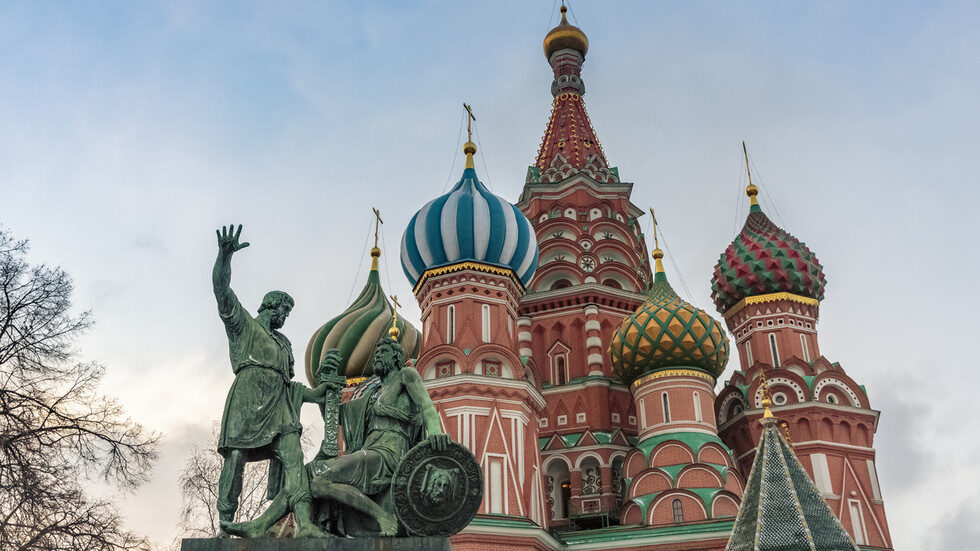
Its replacement goes back to an event that proved to have as much significance for the country's history. In November 1612, Russia was reborn as a state.
End of a dynasty
The early 17th century is known in the history of Russia as 'the Time of Troubles', or 'Smuta'. After the death of Tsar Ivan IV, known as Ivan the Terrible, in 1584, the country found itself sinking slowly into a deep political crisis. The new leader, his son Fyodor I, took little interest in politics, and his court became a place ridden with scheming and plotting by the rival clans of top officials.
Fyodor I ruled for a total of 14 years, and this was a relatively peaceful time, right up to his death in 1598, which created a succession problem since he left no heirs to the throne. Boris Godunov, once Ivan the Terrible's confidante and brother to Fyodor's beloved wife, had managed to consolidate a great deal of power in his hands and had been ruling the tsardom as de facto regent for at least 15 years until then. The only legal contender to the throne would have been Fyodor's brother Dmitry, the youngest son of Ivan the Terrible and his last wife. Dmitry, however, died as a child under mysterious circumstances. Godunov was believed by many to have been involved in his death, since Dmitry was the last heir of the Rurik dynasty.
Godunov was indeed a man believed by many to be capable of removing those who stood in his way. Some of his opponents were reported to have died in accidents while hunting, or of a sudden disease. In the absence of hard facts, all of these things remain conspiracy theories; nevertheless, it has become part of Russian lore, and many historical and cultural references that are part of the nation's legacy have Boris Godunov somehow connected to the death of Tsarevich Dmitry.
Thus, Tsar Fyodor's death marked the end of the Rurik dynasty, which had ruled Russia since it became a state in the 9th century. Godunov, while a powerful contender, was not popular since he was not of noble origin. Moscow's nobility looked down on him, yet did nothing to stop Godunov from manipulating the Zemsky Sobor (national assembly) into electing him tsar in 1598.
And the truth was that Godunov had all the makings of a great tsar. He was ambitious, had a lot of energy, and envisioned many reforms for Russia. He could have become a 'reformer' tsar, the kind of a ruler that Peter the Great was almost a century later; but timing, as usual, was everything.
In 1600, an event that neither Godunov nor anyone else in Russia had any way of knowing about occurred far away from the country, and it had long-lasting detrimental consequences. A massive eruption in Peru created a volcanic winter and led to worldwide famine. In France, the wine harvest was late, but Russia, a much colder country, suffered much more. The poor crops yields of 1601 and 1602 led to famine, which only intensified in 1603 because, even though the weather was back to normal, the fields were empty and there were not enough people to work them.
Boris Godunov did his best to help the starving nation and the dying economy by first selling grain from state granaries at half price, and later by giving away grain and money to the poor until the treasury was depleted, but none of this would be enough. Many peasants were forced to flee to large cities, such as Moscow, or south, risking their lives as the roads were swarming with robbers and even cannibals.
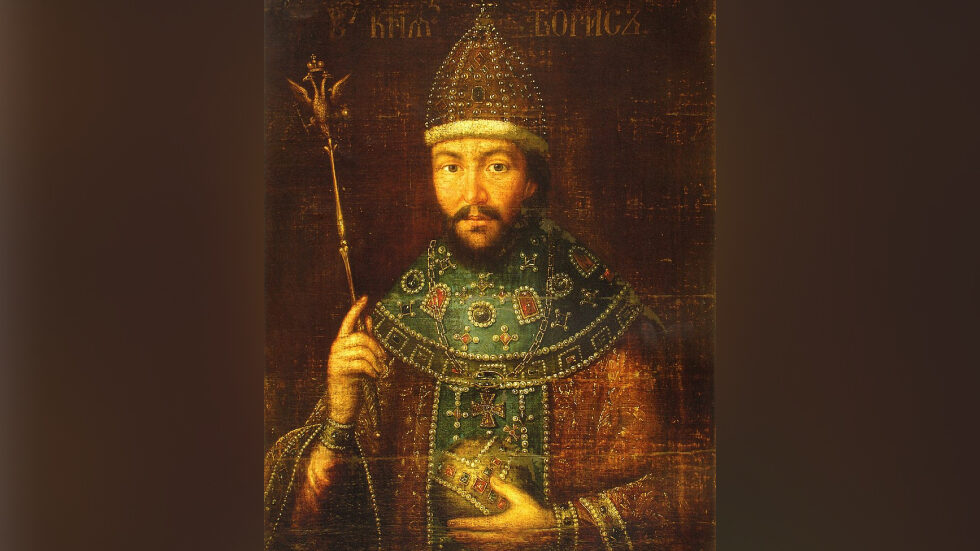
Collapse and anarchy
A young schemer and opportunist, False Dmitry I, also called Pseudo-Demetrius I, one of the most notable figures in Russian history, did not hesitate to capitalize on the rumors.
The personality of this contender for the Russian throne is a matter of debate up to this day.
Here are some known facts. As a young man, he made himself known in the Rzeczpospolita, in the territories of modern Ukraine that were part of Poland then. The man was familiar with the courtly lifestyle and was certain - perhaps, sincerely - that he was Tsarevich Dmitry and miraculously survived an attempted assassination by Godunov and his agents. He claimed that he was the rightful heir to the Russian throne and succeeded in securing the support of a group of Polish plutocrats. The Poles had a plan in mind when they agreed to help the 'pretender' - they wanted to bring Pseudo-Demetrius into power and expected him to return the favor later. The king of Poland also saw an opportunity for himself in this to obtain Russian territories. The first military campaign False Dmitry launched against Moscow was doomed to failure, and Russian troops defeated his sparse forces. This, however, did not stop him. And as the chaos in Smuta-torn Russia grew, the number of the 'true tsar's' supporters increased. In 1605, in the midst of Russia's internal political upheaval, Godunov had a stroke and died at the age of 53. Unimpeded, False Dmitry entered Moscow.
But the 'pretender' did not rule for long. Irrespective of his true origin, he was a complete stranger in Moscow, having no knowledge of the country, the people, traditions, or elites. He was, most likely, a talented and outstanding man, but at the same time unfit to rule a vast country on a day-to-day basis. As a result, a conspiracy was formed against False Dmitry among the boyars, which he failed to uncover. He was killed at the end of his first year on the throne.
After the 'pretender' was killed, the country plunged into anarchy. The mastermind of the conspiracy, Vasily Shuisky, was only good at scrambling for power, at all costs, and arguably did not have any other talents. Therefore, when he made it to the throne, he did not even have the little and wavering authority that Pseudo-Demetrius and Boris Godunov may have possessed. A wave of peasant uprisings swept through the country. Another False Dmitry tried to claim the throne. Although almost no one believed him to be the true heir, he still surrounded himself by a ragtag group of supporters mainly coming from the lowest social strata - outlaws, plunderers, mercenaries, bandits, etc. who followed him, attracted by the promise of easy loot and perhaps even a more respectable position in society.
It was against this backdrop that a large-scale intervention by Polish troops headed by King Sigismund III Vasa started. The Poles got bogged down besieging Smolensk, a strategically important city in the border region between Russia and Poland. However, in the decisive Battle of Klushino, the Russian Army was utterly defeated. After that, a boyar convention in Moscow, made up of the seven most powerful people in the court, staged another coup. Shuisky was overthrown and Wladyslaw, the son of the Polish king, was proclaimed Russian tsar. Moscow was handed to the Poles without a fight, lest the city be seized by False Dmitry II's supporters, a scenario the boyars feared most. Shuisky was literally pulled down from the thrown and made a monk. Later he was taken to Poland, where he was subjected to many indignities and humiliation, and died.
Polish troops controlled Moscow, but not Russia. Besides, the country's vast territories, rife with chaos and anarchy, could hardly be called a state at that time. Russia was inundated with various groups of mercenaries from Poland, Sweden, and local fighters as well, while the Polish commandant of the Kremlin, Aleksander Gosiewski, had the Moscow boyars wrapped around his finger. The term 'Rule of the Seven Boyars' is still used in Russia to describe an ineffective, deeply corrupt and incompetent government.
Moscow was on the verge of famine. The government had some control over the capital city, while every other region beyond Moscow was ruled by anarchy. Foreign mercenaries were entrenched in the Kremlin. This was something Russia had never experienced before.
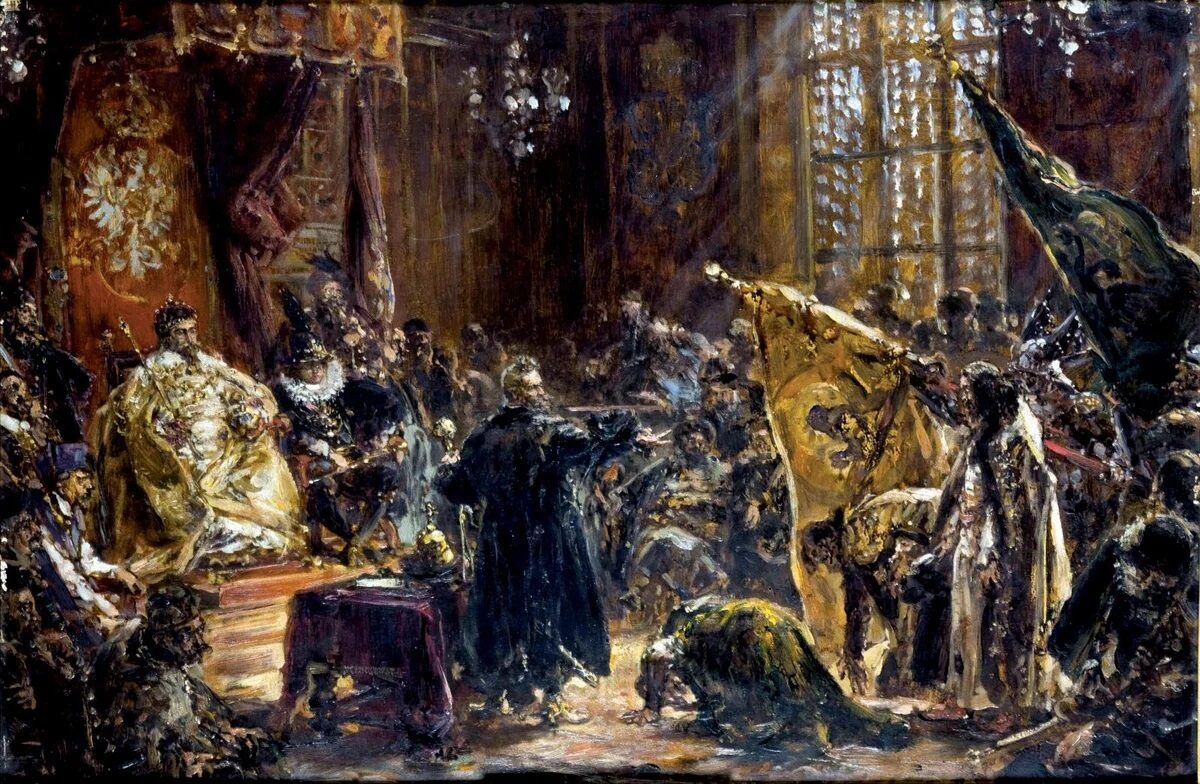
At that time, the figure of Patriarch Hermogenes unexpectedly rose to prominence in Moscow. The old priest turned out to be a capable political writer. He produced and disseminated pamphlets urging people to rise up against the invaders, crown a Russian tsar, and restore the country. The Poles did not dare kill an authoritative priest straight away, so Hermogenes continued to stir popular unrest. Any attempts to threaten or persuade him were met with either disdainful silence or curses.
The first potential savior of Russia was Prokopy Lyapunov, a military commander who was not without some leadership qualities. He started creating a militia by gathering provincial soldiers who had lost their command but were still eager to fight for the country.
The Polish troops in Moscow quickly succumbed to debauchery. Soldiers have always been soldiers. The mercenaries did not get paid on time, but they were used to this, and the riches of Moscow were at their disposal. The troops regularly got into fights with locals. A Pole could slice up an unfortunate Russian for fun; other times a hajduk could get drunk and disappear until he was found a week later in the Moskva River, partly eaten by crayfish.
It ended as expected. In March 1611, Moscow came together in a fierce revolt against the Poles. Years of civil wars left the city with a huge stockpile of weapons. An altercation between Polish soldiers and locals led to a brawl, which escalated when participants took up wooden yokes and sabers, and ended in an all-out fight. The rioters formed units and were so numerous that the Poles had to retreat to the city center.
Then, Gosiewski gave the order to set fire to Moscow.
It was a particularly damp spring, and the fire did not spread well, even though most of the buildings were made of wood. The mercenaries even theorized that Moscow was under some kind of spell. Ultimately, however, they succeeded, and the rioters had to scatter to save their homes from fire. The city became a half-ruined mess, and the barricades which were quickly erected in the streets made riding through Moscow impossible.
Street fights erupted across the city. Polish and Russian soldiers hunted each other through the labyrinthine streets, and bandits pillaged whatever they could find. At that moment, Moscow was not unlike Aleppo during the recent Syrian civil war.
When Lyapunov's militia arrived, it tried to liberate the city, but it could not defeat the Poles. Maintaining discipline among the diverse troops consisting of former soldiers, Cossacks, and city rioters proved a challenge for Lyapunov. Penetrating the city was a military operation in itself, as the narrow streets were full of unpredictable dangers and new fights began at every other step. Both sides suffered from a lack of supplies. At one point, the Russians and Poles had to get salt from the same merchant's depot that lay in the neutral zone. The Poles were isolated in central Moscow, but the question was, who would last longer?
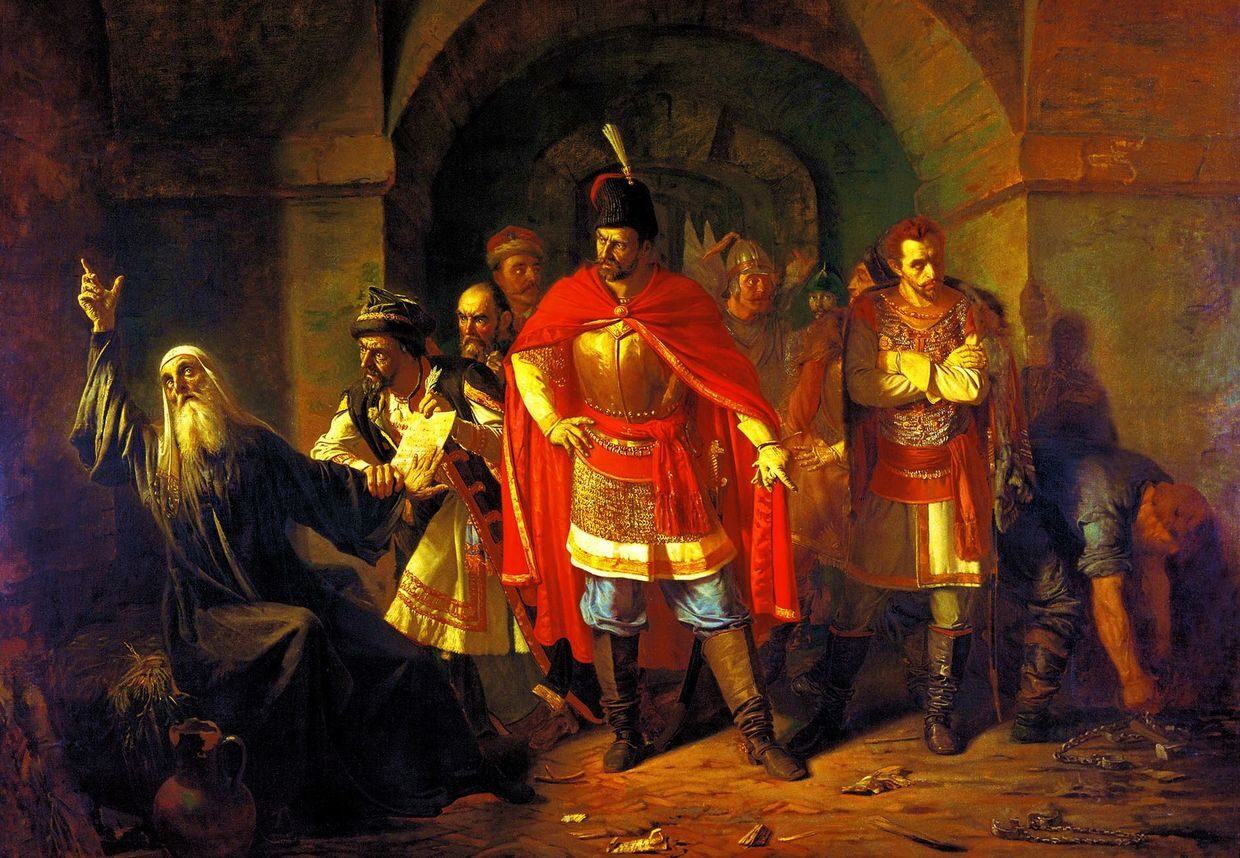
In this way, the first militia lost its leaders. Many nobles who had formed its backbone called it quits - many of them simply went home. Only part of the units remained in and around Moscow - the Cossacks, some 'streltsy' (semi-regular infantry), and some noble cavalry. The Poles could not crush this militia but were still able to get some convoys with food through to the Kremlin and relieve the besieged soldiers with new forces.
The Polish garrison commander in Moscow, Gosiewski, pillaged the city districts that he could reach, including the Kremlin treasury, and soon left the city as a rich man with the tsar's jewels in his pocket. However, a strong garrison remained in place.
17th century Kickstarter
Help was about to come from a place far from Moscow.
Kuzma Minin was neither an officer nor a nobleman. He was a prosperous meat trader in the city of Nizhny Novgorod, located around 400km east of Moscow and considered the strongest fortress in central Russia. He most likely never dreamed of becoming a war hero, but the turn of events dictated that he would play a significant role in raising the second volunteer army, which defeated the enemy.
It was even believed that some of the most venerated saints of Russia, such as Sergius of Radonezh, appeared to Minin in his dreams and called him to undertake specific actions that assured the success of the second resistance campaign. Minin approached the task differently than Lyapunov. The latter started by recruiting soldiers, but Minin and other active citizens of Nizhny Novgorod began with a fundraising campaign. As an experienced and respected merchant, Minin was chosen by his peers to oversee the handling of public funds donated to raise and equip the second people's militia. Minin himself donated a large part of his personal finances and called on others to do the same.
Unlike Moscow, which had been looted mercilessly, Nizhny Novgorod still remained in possession of considerable funds and assets at the time, and it served the purpose very well. According to contemporary reports, Minin, who was supported by the resistance movement, ran a property appraisal campaign and calculated a 'militia tax', or the share that each wealthy citizen had to donate to the cause.
The popular patriotic movement on the rise in Nizhny Novgorod applauded Minin's initiatives. Soon, other cities joined in response to an official letter issued by the Nizhny Novgorod assembly, sending in money from as far away as Siberia. Eventually, the movement accumulated enough to fund a well-trained and well-managed army.
The first to join were soldiers and officers who survived the siege of Smolensk by the Polish Army, which lasted for 20 months before the Poles found a way to breach the fortress walls. The fighting was violent and the city was starving, so after the victory King Sigismund III spared the surviving defenders and set them free. Many of them moved to Arzamas, a town not far from Nizhny Novgorod. Minin offered good pay to the volunteers of the second militia in order to attract experienced and well-trained fighters, and his planned worked.
Nizhny Novgorod also paid for weapons, gear, and horses, and as a result, was able to raise a formidable force. Volunteers arrived from all over the country to join in, including Cossacks and noblemen. A volunteer regiment arrived from Siberia. The army now needed a commander - and the right man for the job was not hard to find.
A hero of his time
Meet Prince Dmitry Pozharsky, the second main character of our story. He fought in the streets of Moscow alongside Lyapunov, was seriously wounded and severely burned in the fire. He was recovering when Minin visited him and convinced him to lead the new army.
Pozharsky had a reputation as an excellent warrior and commander, but his main advantage was his personal, rather than professional, traits. In the whirlwind of intrigues, scheming, assassinations, and betrayals of the past 12 years, he maintained his reputation as an honest man, consistently serving the governments considered lawful by the majority; he also had no ties to the Poles, False Dmitry II, or the marauding gangs. It was his untarnished reputation that made him the perfect candidate to lead the new Volunteer Army.
He accepted the offer on one condition. He demanded full military control, but at the same time, refused to be involved in any civil affairs, so Minin became the civil and political leader of the army.
Pozharsky's decision to share his power with a merchant was not characteristic of a noble guided by a code of honor and responsibility before his estate. And yet, he was prepared to put aside his corporate interests for the benefit of the undertaking - moreover, he insisted on it. He needed a good civil manager, so the Volunteer Army had two leaders. Pozharsky as general and Minin with the peculiar title of 'Elected by the People'.
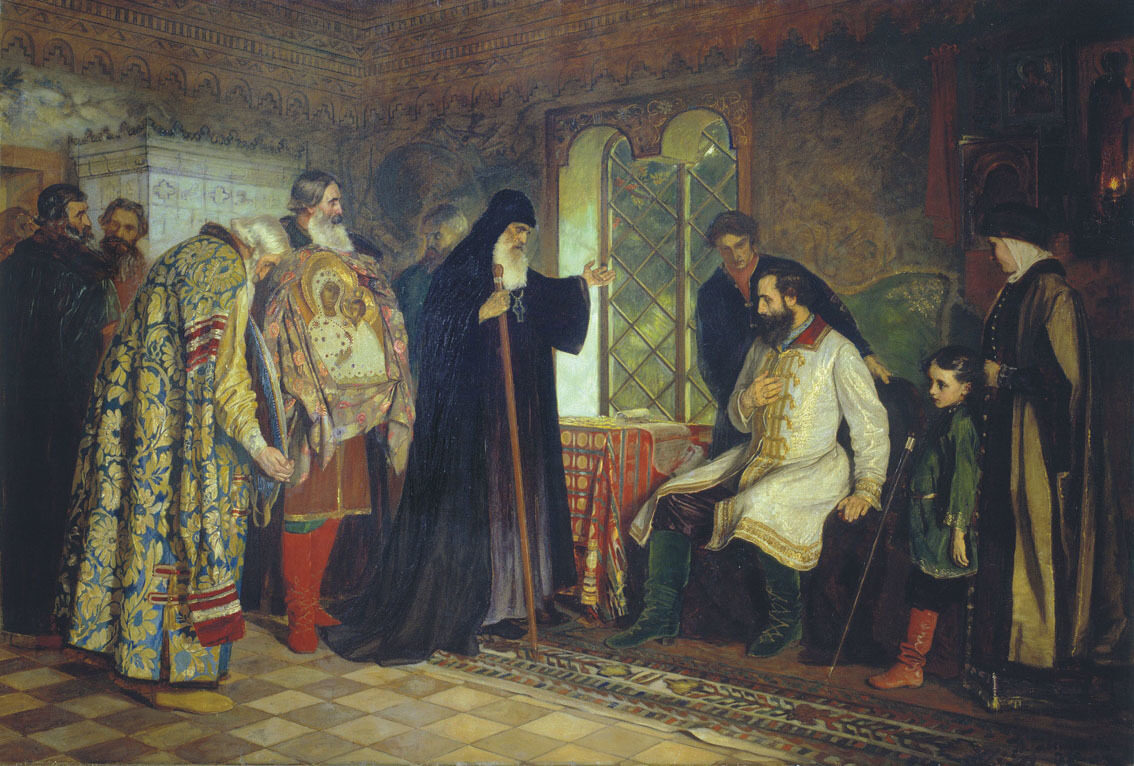
In early 1612, the west of Russia was in ruins, but from the east, the Second Voluntary Army was marching, the army of Minin and Pozharsky. It hit the road in spring.
The march of the Motherland's liberators
The volunteer corps grew, with people joining its ranks along the way. Among those who joined were units of False Dmitry II's army (who had died by then in an unfortunate accident), small groups of mercenaries and servicemen, and occasional aristocrats. The volunteer militia was the most democratic army imaginable in Russia at the time. The Poles mocked it, telling Minin to stick to the meat trade. They refused to see it as a military force to be reckoned with.
If the Poles had had any idea of what was going on, they would not have laughed. Discipline in the army supervised by Kuzma Minin was cast-iron, and it had no shortage of military supplies and equipment. When his own relatives tried to avoid the tax imposed on citizens to meet the army's needs, he sent a unit of streltsy to collect the money from them. Gallows were erected along the roads to hang marauders and bandits. It was a stark contrast to the previous period of anarchy, and people were prepared to do anything for Minin and Pozharsky, who were practically worshipped. Once new units joined the volunteer corps, which was close-knit through order and discipline, they adjusted quickly and marched along. A carefully organized taxation system raised enough money for Minin to pay the soldiers. And those who were not satisfied and tried to rob their fellow soldiers were sent to the gallows. Drinking was also restricted, so the militia fighters remained sober.
All of these measures combined had a positive effect - the volunteer army came to be regarded as a serious organization with strict requirements, and with generous pay. This attracted both soldiers and townspeople. Apart from that, the campaign was actively supported by the church. When Patriarch Hermogenes of Moscow died, the cellarer of the Holy Trinity, Lavra of St. Sergius Avraamy Palitsyn, entered the spotlight. It can be said that Minin, Pozharsky, and Palitsyn formed a triumvirate of sorts, as the military, civilian, and spiritual leaders, representing the three social strata fighting against the Poles. Besides, the church was a very rich institution. At a time when the monarchy was in ruins, the church could provide both tangible support and guidance to the people of Russia. The idea of fighting for the Motherland and its faith reverberated strongly in people's hearts. And the concept of the Motherland was not romanticized back then. The Volunteer Army showed loud and clear that they represented a society where the rich were not afraid to lose their wealth and the poor did not tremble for their lives.
By April 1612, a large volunteer army was ready and stationed around 250km from Moscow in the city of Yaroslavl, commanded by Prince Pozharsky and co-managed by Kuzma Minin. The force stayed in Yaroslavl for a total of four months while Minin was dealing with various administrative and financial issues, and Pozharsky was organizing the volunteers into a unified army. They even managed to get some defectors from the Polish Army to join the resistance, lured by higher pay.
As the Second Volunteer Army approached Moscow, it was joined by more soldiers and Cossacks who survived the defeat of the first volunteer force. Overall, however, it wasn't a very big army, since the country was in bad shape and mobilizing more than 12,000 people wasn't possible.
In the meantime, Grand Hetman of the Polish-Lithuanian Commonwealth Jan Chodkiewicz was tasked by the king with an advance on Moscow. Chodkiewicz was an outstanding commander who had scored multiple important victories, and was now leading a large force of heavy cavalry, infantry, and Cossacks, as well as a food and munitions convoy carrying a supply of gunpowder that the army planned to use to tear down the Kremlin walls.
The decisive battle
In early September, a decisive battle took place. It was quite unusual by the standards of the era - in fact, it was a running battle in the streets of the city. Chodkiewicz hauled 400 carts to the Kremlin.
He had a numerical advantage. About 12,000 Polish fighters in the field and about 3,000 in the Kremlin were opposed by about 8,000 fighters of the Second Militia and 2,500 soldiers of the First who kept apart. In the open field, the Poles would have had the advantage. Their well-trained heavy cavalry would simply have swept the Russians away. But the Russians knew this and were preparing to fight in the maze of city streets.
Minin and Pozharsky built a solid fortified area within the city.
The Poles attacked boldly - both from outside Moscow and inside the Kremlin. However, the militias used their advantage extremely effectively. Chodkiewicz could not properly use his cavalry in the streets. Rifle fire poured from attics and doorways. Cossacks and streltsy constantly ambushed and counterattacked the Polish detachments as they made their way through the streets.
The Poles were excellent soldiers. Despite the lack of infantry, they attacked fiercely, inflicting losses on the militia, and tried to break through the Russian lines of defense in various places. At one point, cellarer Avraamy Palitsyn personally stopped retreating Russian troops with an inspiring speech - and the promise of a pay raise
The struggle came to a head when the Poles were finally able to find a weak spot in the ranks of the militia and almost broke through to the Kremlin from the south. Everything was decided in a battle for a small fortification south of the main fortress. Though the Poles managed to drive the Cossacks out of the fort, the vanquished defenders did not disperse, but rather hid in nearby ruins and ravines. Chodkiewicz, thinking the job was done, led his convoy of carts through the fort.
This was a big mistake. As soon as the gates of the fort opened, the Cossacks and militia rushed to attack from all sides. The Polish supply column was trapped in the streets under continuous fire. Russian infantrymen fired away, while Chodkiewicz's horsemen, who would have, without exaggeration, exterminated tens of thousands of Russians in an open field, could not maneuver or turn around in the city streets.
Minin, by intuition, guessed when the moment had come for the final blow. He asked Pozharsky for the last reserves - several hundred fighters. This blow led part of Chodkiewicz's detachments to flee, and most importantly, part of the convoy was captured, and the rest burned in the streets. Gunpowder exploded with incredible pyrotechnic effect. Hopes of a breakthrough into the Kremlin were dissipating like smoke.
In the history books, Prince Dmitry Pozharsky is often referred to condescendingly. He's given a pat on the back for being a good commander, but never presented a leader capable of reaching the stars like some of his contemporaries. Compared to grandees such as Gustav Adolf of Sweden, Ambrosio di Spinola, or his rival in the battle for Moscow, Hetman Chodkiewicz, he is ranked far back in the second tier of commanders.
However, Pozharsky's virtues as a commander were exactly what was needed to win one of the most important battles in Russian history. He coped excellently with routine management - the militia was well fed, well supplied with weapons and ammunition, and soldered together by strong discipline. He was endowed with an abundance of self-control and common sense that allowed him to keep his head in both failure and success. He had a clear tactical mindset, and unlike many brilliant geniuses, he led his team not to a beautiful goal or a mental breakdown, but to the end of the 60th second of the last minute of the match. And this second came exactly at the moment when Chodkiewicz's battered army rolled out of Moscow. An emotional headstrong genius would certainly have rushed to catch up with the Poles evacuating the city - and thus expose his men to a blow from Chodkiewicz's heavy cavalry on the open field, which the militia most likely would not have survived. But Pozharsky did not allow himself to be intoxicated by victory and gave the enemy no chance to turn the tide of the battle once again. It was fate that Russia was saved by a professional that day, rather than a genius.
Although there were hotheads on the Russian side who wanted to pursue the Poles and finish them off completely, Minin and Pozharsky decided as one not to go to the field where the Poles would have the advantage. Chodkiewicz remained with part of the cavalry, including his elite hussars, but was left without infantry or supplies.
This decided it.
The Polish Army turned around and left Moscow.
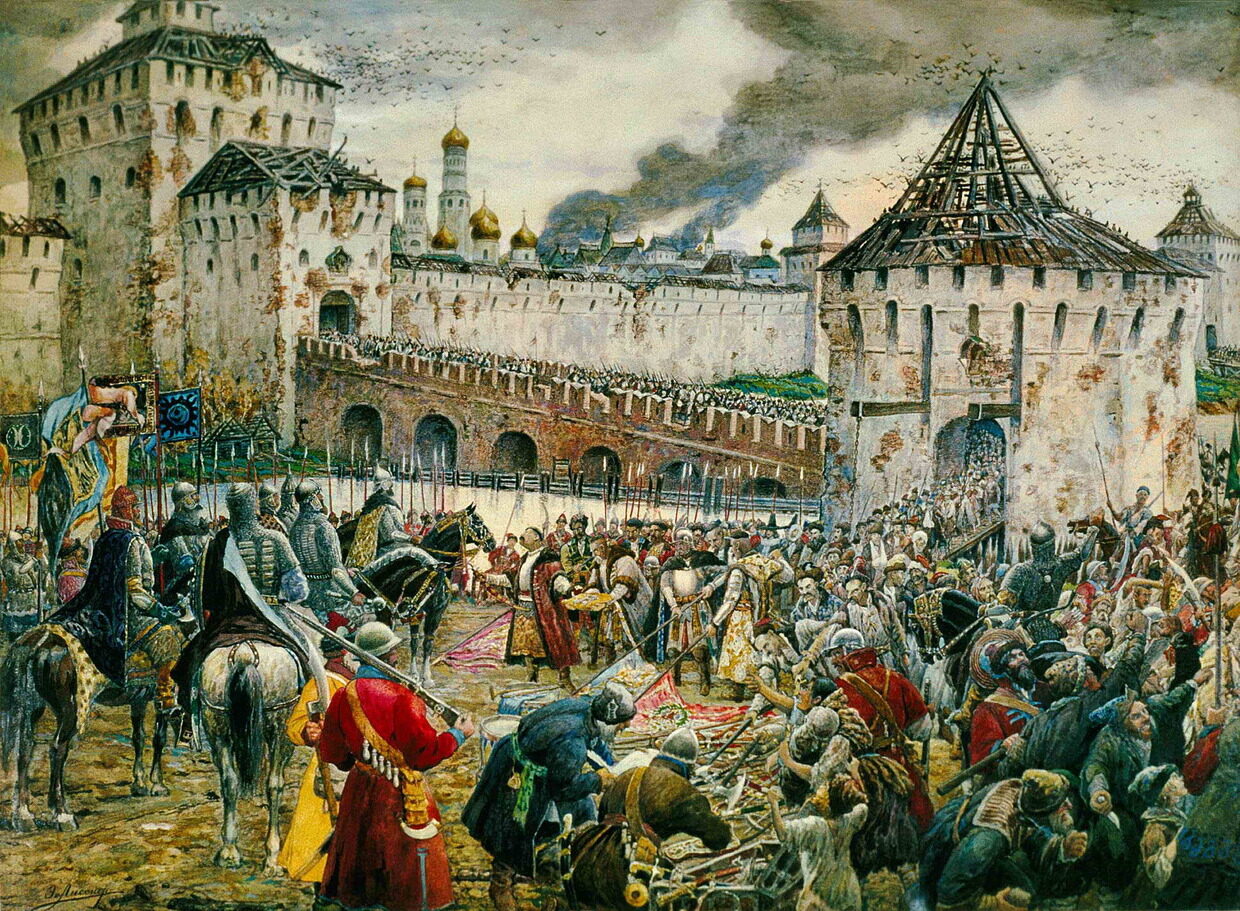
The Polish garrison in the Kremlin did not want to give up, but quickly ran out of food supplies. First, they resorted to eating crows, rats, and grass, and then set upon their dead comrades in an orgy of cannibalism. The Russians subsequently discovered an absolutely monstrous trophy in the Kremlin worthy of a horror movie - a barrel of salted human flesh.
The Poles had long ago expelled everyone superfluous, including the families of the Council of Seven. However, the boyars themselves remained trapped inside the Kremlin and were also starving.
Meanwhile, the Russians were calmly preparing an assault. On November 1, Kitay-Gorod was taken. Now, only the Kremlin remained. The last day the Poles put up real resistance was November 4. The Russians conducted negotiations with the Poles, setting down clear terms: If the Russian boyars were given guarantees of personal safety, the Poles would be allowed to unconditionally surrender. Finally, on November 5, an agreement was signed on the surrender of the Polish garrison. On November 6, the remnants of the garrison, exhausted to the limit, surrendered. For the first time in two years, there was silence in Moscow.
Birth of a nation
What followed was more or less a formal wrapping up of legal technicalities. In 1613, electors from all classes, including peasants, gathered in Moscow to select a new tsar. The elections were stormy, but in the end, Mikhail Romanov became tsar. He was not a real leader but was chosen as a compromise figure. In any case, he became a tsar who was recognized by everyone. The inner turmoil was over.
Nevertheless, the war with the Poles still continued as if by inertia. The Swedes had also invaded Russia, and they had to be fought off as well. And there were still many atamans and new impostors roaming the country.
However, by 1618, the Time of Troubles had come to an end, albeit at dear cost. Poland and Sweden had torn off large chunks of Russia, Smolensk was lost for several decades, and Russia had lost access to the sea.
But the backbone of the country had been preserved.
Minin and Pozharsky received significant, though not monumental, awards. Minin was granted nobility, as well as land allotments. He enjoyed the status of tsar's confidant and lived in the royal palace until the end of his days. He died a natural death in 1616. Pozharsky also enjoyed the tsar's favor and became a boyar, thus entering the establishment of the Russian state. He died in 1642. Both are considered national heroes to this day - two of the key figures in Russian history. A monument to Minin and Pozharsky stands on Red Square.
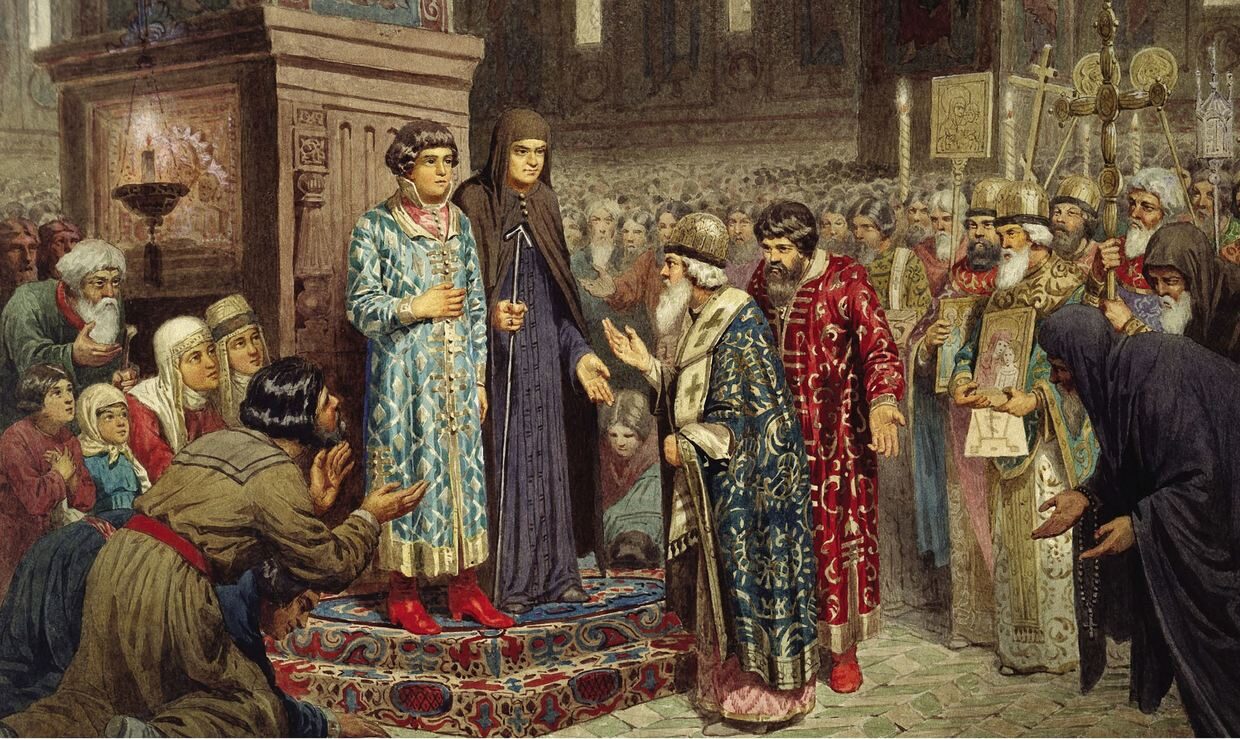
Moscow had been devastated, left as a hodgepodge of ruins where soldiers and bandits plundered everything still worth plundering. The revival of Russia took place not thanks to the state, but to its society, and - as if this story had been written by a novelist - the team of saviors seemed to have been specially selected from people with completely different backgrounds and personalities - a military professional, a provincial merchant, and a priest. The victory in the streets of Moscow and the election of the first tsar of the Romanov Dynasty meant not just a turn of military fortune and the replacement of one monarch by another.
Amidst this fire and smoke, the Russian nation walked onto the stage of history.
By Evgeny Norin, a Russian historian focused on conflicts and international politics
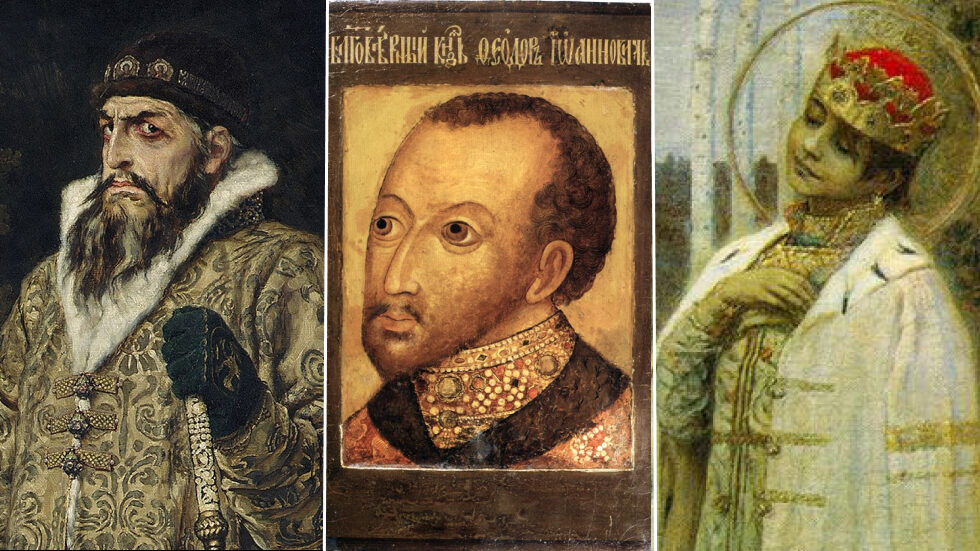
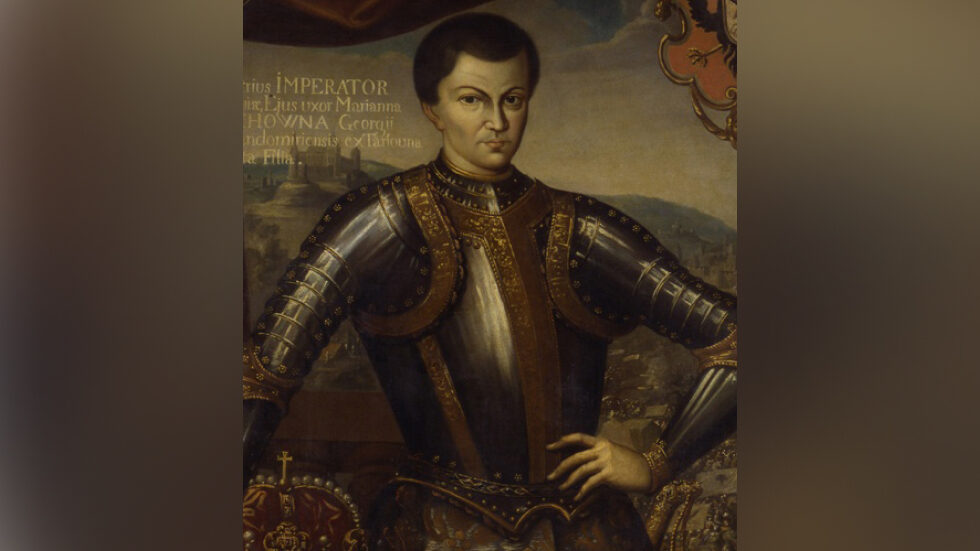
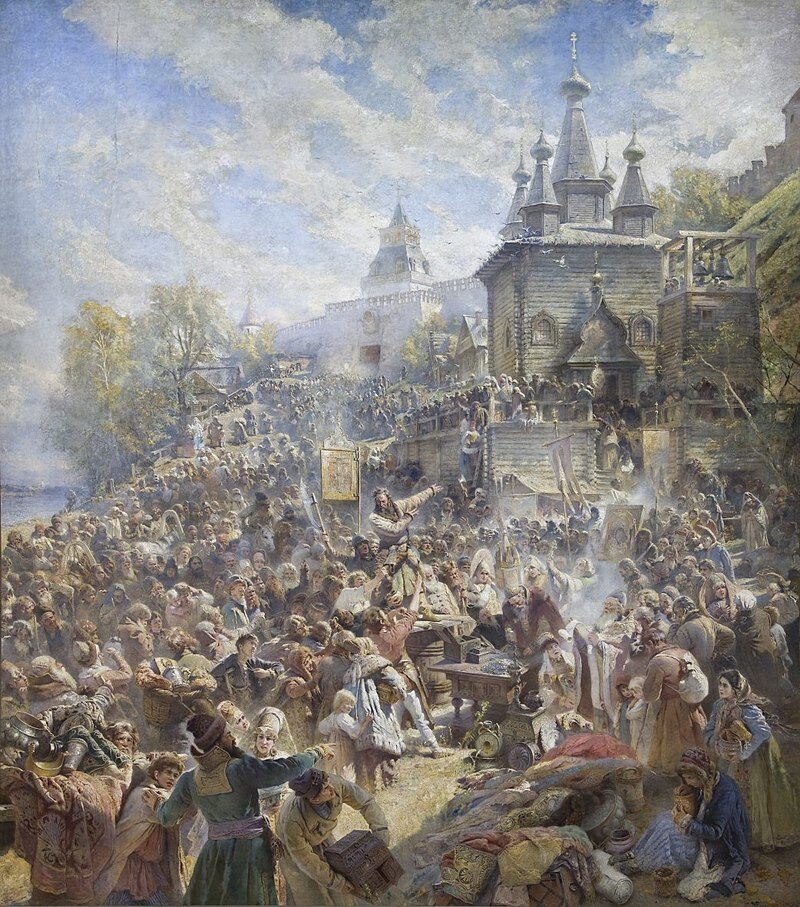
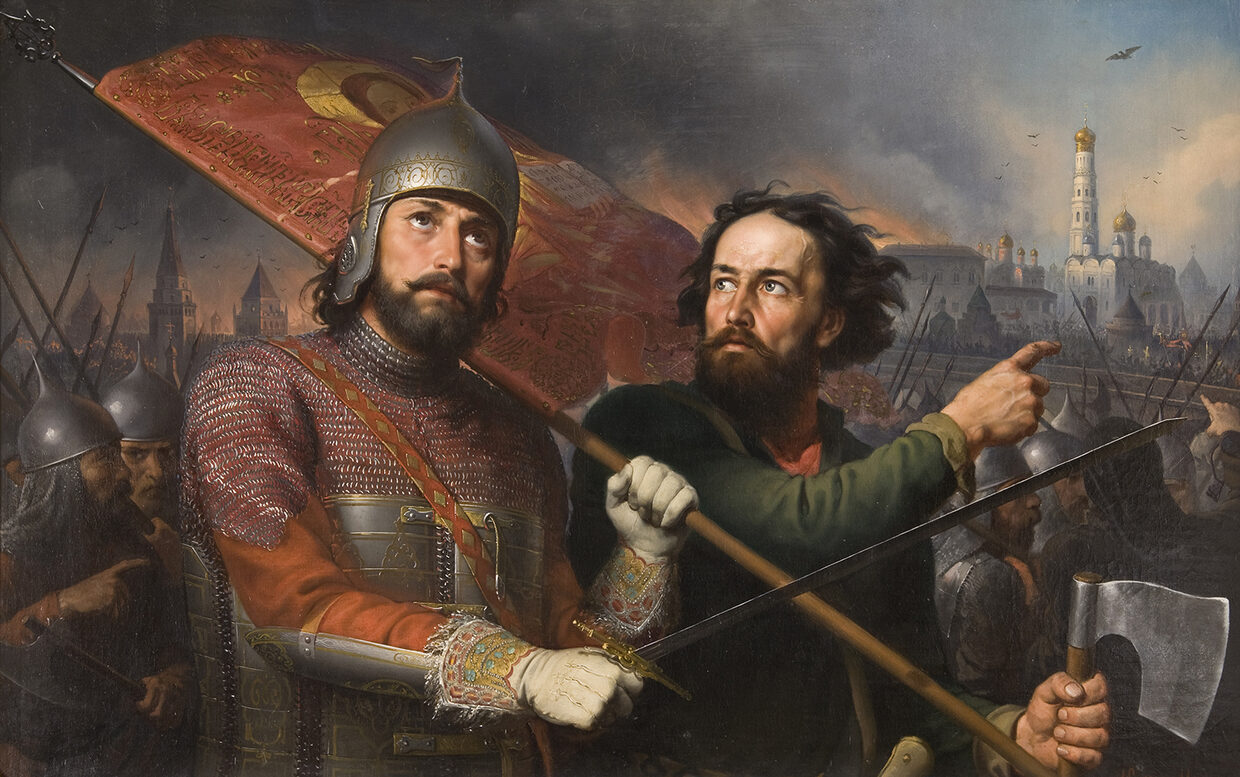



I am afraid that is the same with Mr. Putin.This is indicated by some of his behavior, such as being compatible with vaccines, but also the name itself, which is not Russian-sounding at all, but translates perfectly into English.
PUTIN = PUT IN = PUT INTO
Probably also Mr. Putin wants a New World Order. The whole confusion is that the West wants the New World Order as a unipolar world, and Russia wants the New World Order as a multipolar world, or at least a 2-polar world.
There is no more secret here, positions have been determined and cards dealt. All we see now is bargaining for details and preparing the public ...